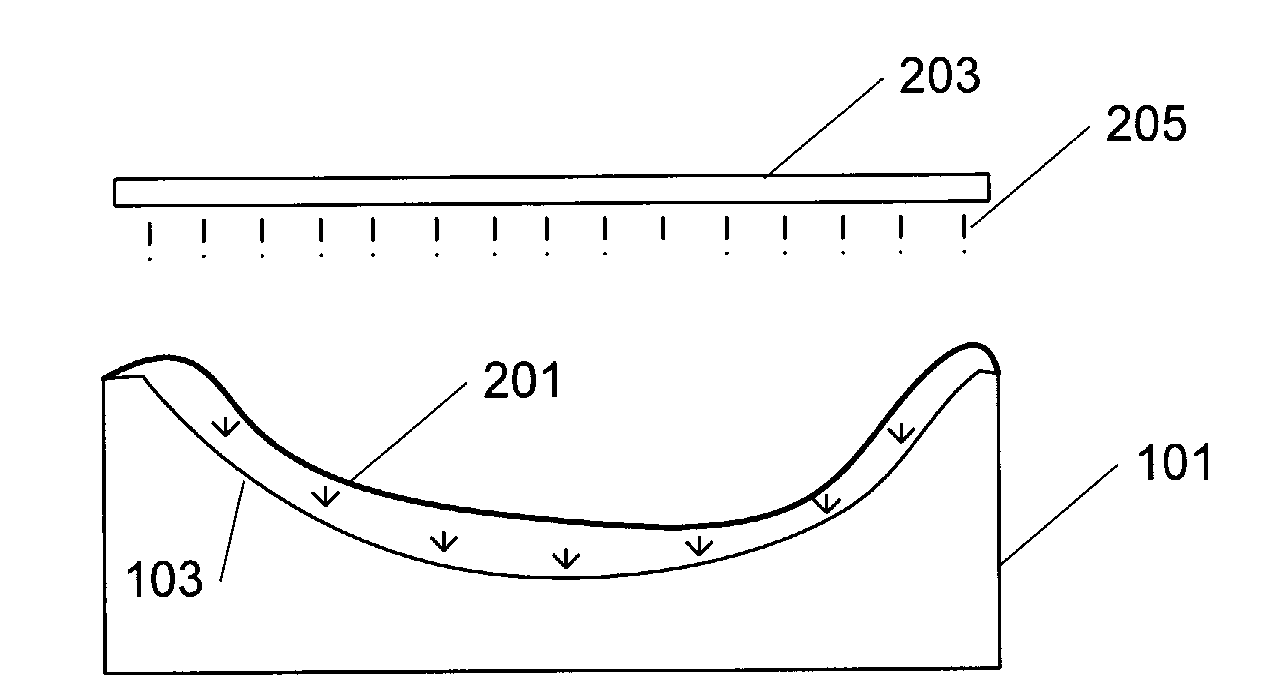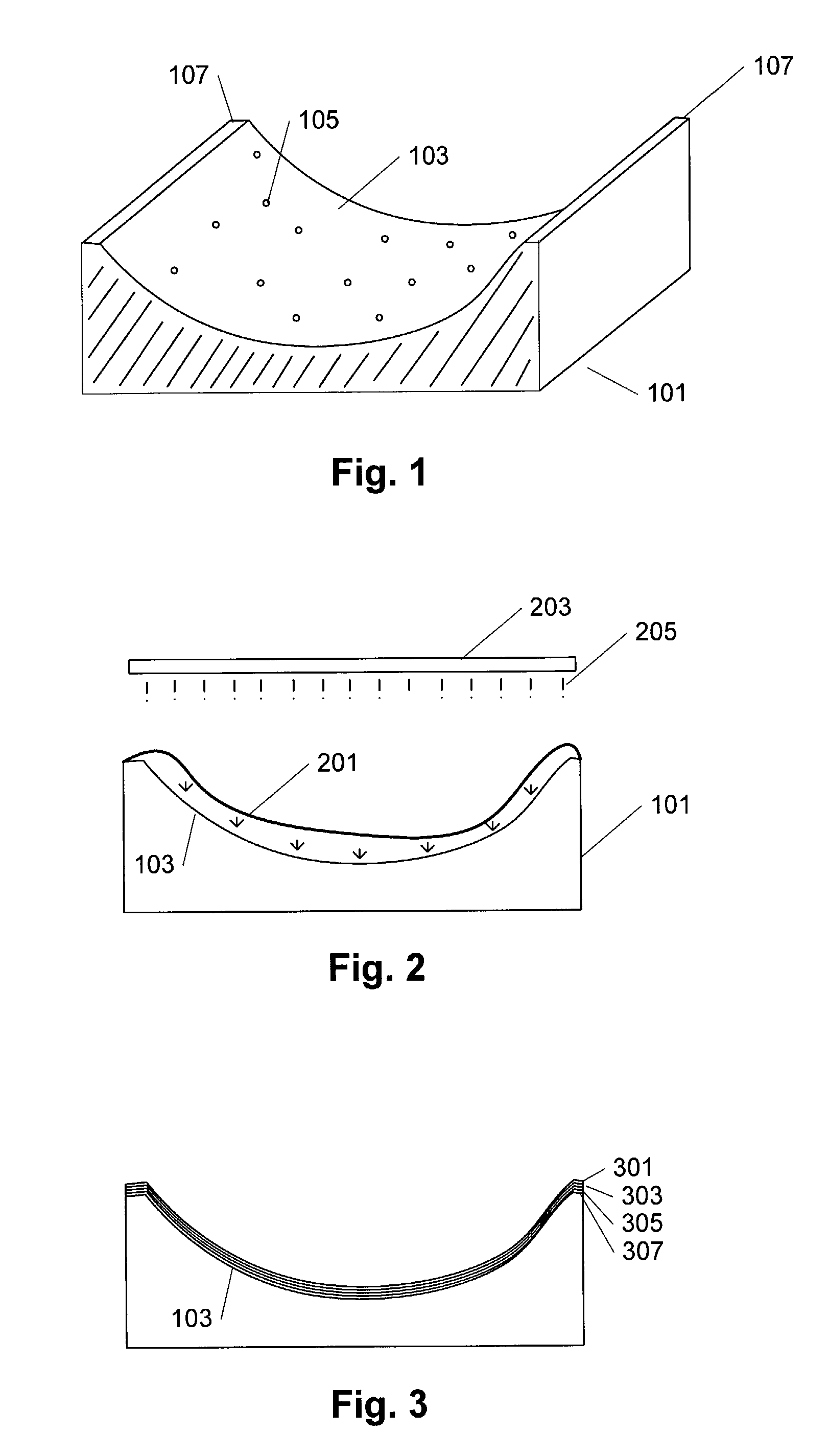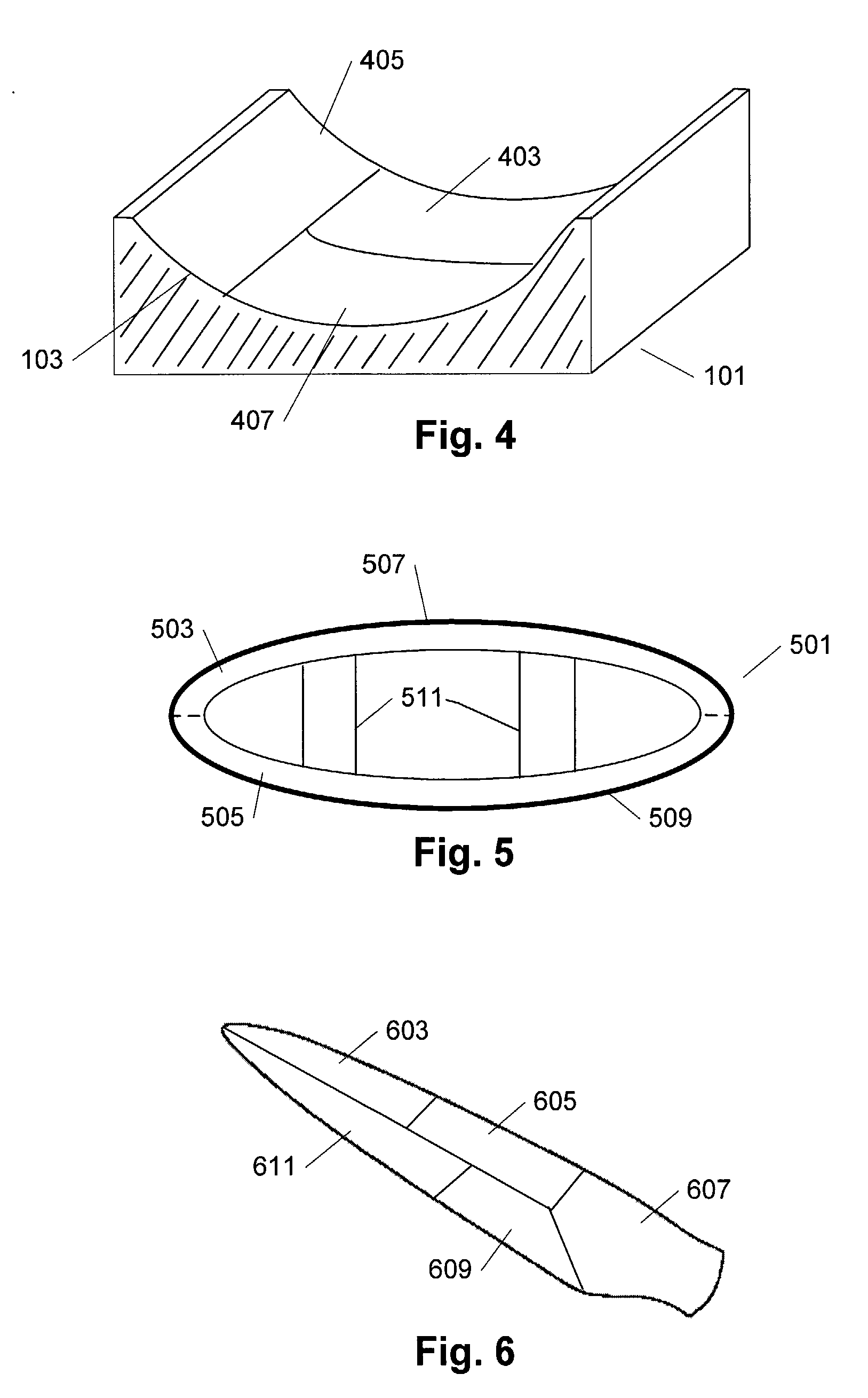Method of Manufacturing a Fibre-Reinforced Part for a Wind Power Plant
- Summary
- Abstract
- Description
- Claims
- Application Information
AI Technical Summary
Benefits of technology
Problems solved by technology
Method used
Image
Examples
Embodiment Construction
[0027]FIG. 1 shows a sectional view of an open mould 101 that can be used in connection with the manufacture of a fibre-reinforced part, wherein the outermost layer of the part is a film. The interior surface 103 of the mould comprises a number of vacuum holes 105 and an edge 107. The open mould is used in that a layer of film, preferably a thermoplastics film, is arranged on the interior surface 013 of the mould; the film is adapted to the shape of the interior surface of the open mould in that a vacuum is provided between the mould and the film. This takes place by air being sucked out of the vacuum holes, and in that context the film could initially be attached or secured to the edge 107 to enhance the vacuum effect. Then a number of layers of fibre material are arranged, following which resin is finally added to adhere the individual layers of fibre material to each other, and when the resin is cured a fibre-reinforced portion is formed where the film constitutes the outermost l...
PUM
| Property | Measurement | Unit |
|---|---|---|
| Shape | aaaaa | aaaaa |
| Thermoplasticity | aaaaa | aaaaa |
Abstract
Description
Claims
Application Information
 Login to View More
Login to View More - R&D
- Intellectual Property
- Life Sciences
- Materials
- Tech Scout
- Unparalleled Data Quality
- Higher Quality Content
- 60% Fewer Hallucinations
Browse by: Latest US Patents, China's latest patents, Technical Efficacy Thesaurus, Application Domain, Technology Topic, Popular Technical Reports.
© 2025 PatSnap. All rights reserved.Legal|Privacy policy|Modern Slavery Act Transparency Statement|Sitemap|About US| Contact US: help@patsnap.com



